How Melbourne Demons helped build Aussie rules
Melbourne showed plenty of promise in 2018, but it’s been a long time since the Australian rules founder and world’s oldest football club was a VFL/AFL power side.

AFL
Don't miss out on the headlines from AFL. Followed categories will be added to My News.
Long-suffering Melbourne fans hope the Dees can translate their deep finals run in 2018 into premiership success this year.
Thought to be the world’s oldest organised football club, Melbourne is steeped in the history of Australian rules. It helped to create and shape the game and founded both the VFA and the VFL.
DEMONS READY FOR NEXT STEP IN 2019
MELBOURNE’S 2019 FIXTURE ANALYSED
PERT’S PLAN TO MAKE DEES AFL POWER
ORIGINS
Demons fans can thank Tom Wills for the creation of the Melbourne Football Club.
He proposed the formation of the club to keep cricketers fit through winter in an article in a local publication, Bell’s Life in Victoria and Sporting Chronicle on July 10, 1858.
Another man, Jerry Bryant, set up a match between the club and a South Yarra side at Yarra Park on September 25. Melbourne won by a goal.
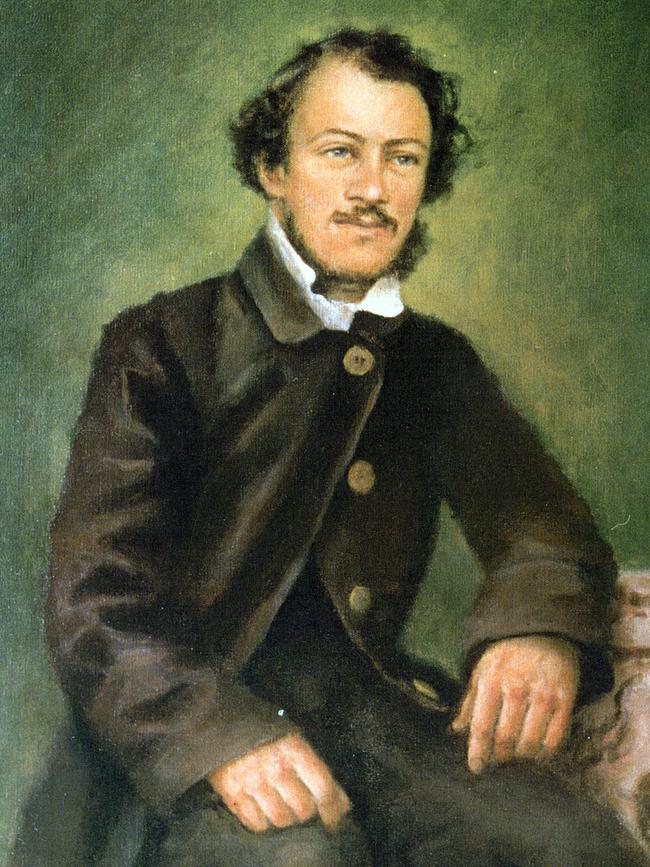
A meeting at Bryant’s Parade Hotel on May 17, 1859, drafted 20 rules that form the basis of Australian Rules football and officially established the Melbourne Football Club.
By 1861, Melbourne was playing in a local competition in a magenta Guernsey (that lasted until the mid-1860s).
A “challenge cup” competition was established in 1865 featuring Melbourne and teams from South Yarra, University, Geelong, Royal Park and Carlton.
The team became known as the Redlegs and formalised its famous red and blue colours in 1872 when former player Larry Bell donated red stockings for all the players (and a blue set for Carlton) purchased on a trip to England, which combined with the players’ blue caps.
In 1873, the uniform became red caps, a blue shirt and knickerbockers with red socks.
Through the 1860s and 1870s, Melbourne and Carlton dominated. They played off for the Challenge Cup in 1876, with Melbourne victorious, and both were founding members of the Victorian Football Association in 1877.
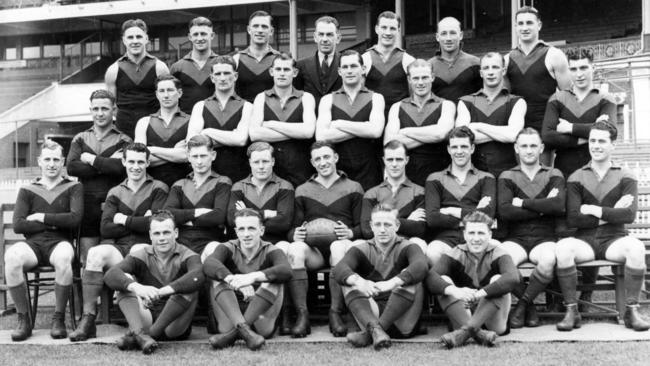
In its VFA days, Melbourne was knows as the Fuchsias.
The club had a fractious relationship with the Melbourne Cricket Club and the MCG in the 1880s to play at the Friendly Societies ground in the Olympic Park area.
Heavily in debt, the MCC took over the club in 1889 and cleared its debts in 1890.
An annual general meeting agreed to a merger with University in 1889 but the forced marriage was never followed through, Melbourne instead taking eight of University’s players.
Melbourne had its ups and downs in the VFA. It never won a premiership but was runner-up five times before it helped found the VFL.
GOLDEN YEARS
The Fuchsias first tasted premiership victory in any competition in the Challenge Cup in 1876. In 1900, it won its inaugural VFL flag, led by captain Dick Wardill.
Melbourne then went through a long lean period. Including its withdrawal from the VFL between 1916 and 1918 because of the Great War, it did not win another final until 1925, under captain-coach Bert Chadwick.
Then, it defeated Collingwood by a handsome 47 points. Bob Johnson booted six goals, forwards Harry Moyes and Stan Wittman chipping in with three each and back pocket Jim Abernethy one of the best on ground.
Club great Ivor Warne-Smith was named Brownlow Medallist that year, winning a second and becoming captain-coach in 1928.
Frank “Checker” Hughes was lured to Melbourne from Richmond for 1933, renaming the team the Demons, clearing out non-performers and debuting new players including a young Norm Smith.
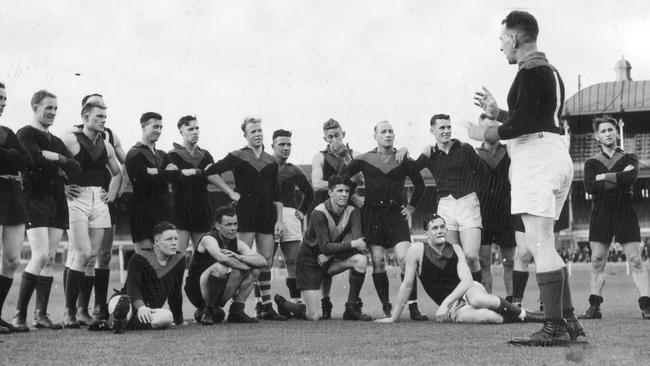
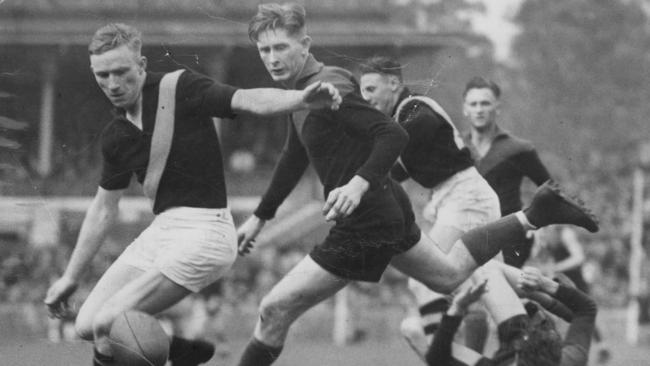
The Demons were on the rise. Between 1939 and 1964, Melbourne won 10 premierships including three-peats from 1939 to 1941 and 1955 to 1957 and six flags between 1955 and 1964.
Its hat trick from 1939 to 1941 was led by Hughes, captain Allan La Fontaine, Norm Smith, Ron Baggott and Percy Beames.
After 1941, Melbourne dropped out of the finals, and Hughes was replaced as coach by Percy Beames.
From 1942 to 1946, the team vacated the MCG for Punt Road when the US Army took over.
Keith “Bluey” Truscott and Ron Barassi Sr were among the players the club lost during World War II.
Hughes came out of retirement to coach Melbourne again in 1946.
The war years saw the rise of Fred Fanning as a goalkicking powerhouse.
But the Dees lost the 1946 grand final to Essendon.
In his final game, against Geelong in 1947, Fanning kicked a VFL/AFL record of 18 goals and one behind against Geelong.
Melbourne drew the 1948 flag with the Bombers, but cleaned them up in the replay.
Don Cordner was captain and Jack Mueller kicked six goals in each grand final. It was Hughes’ last season as coach.
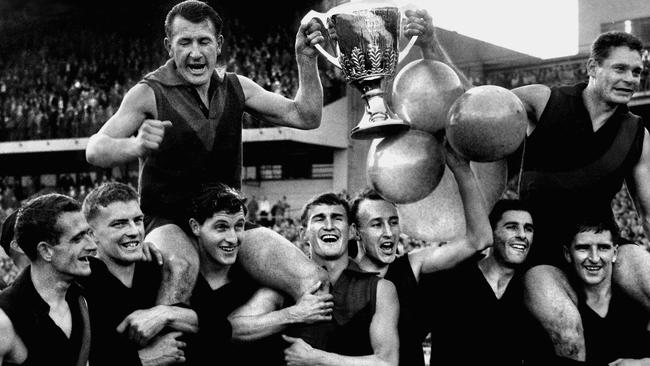
Allan La Fontaine took the reins without success in 1949 and 1950, and finished 1951 with the wooden spoon after a dismal season.
Norm Smith was appointed as coach in 1952. With brilliant midfielder Ron Barassi Jr, who debuted in 1953, the pair drove Melbourne’s 1950s and 1960s success.
The Dees lost the 1954 flag against Footscray but won in ’55, ’56 and ‘57.
Frank “Bluey” Adams, Denis Cordner, Brian Dixon, Ian Ridley, Laurie Mithen, Bob Johnson and captain Noel McMahon starred through this incredible period.
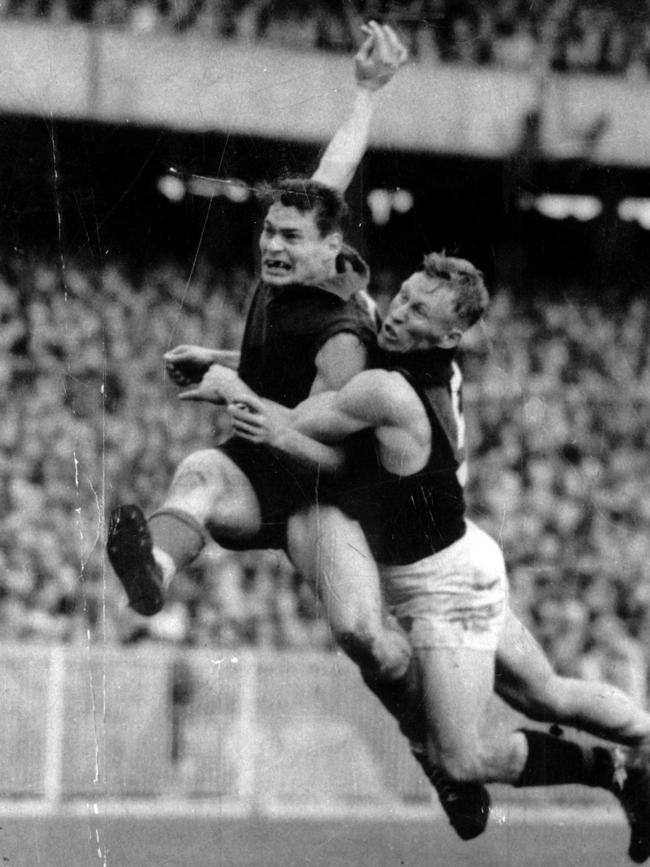
Melbourne lost to Collingwood in 1958 but beat Essendon in 1959. With Barassi as captain, the Dees won the 1960 premiership too, holding Collingwood to 2.2 (14) for the match.
The Dees made the finals in 1961, 1962 and 1963, and defeated Collingwood by four points for the 1964 premiership.
Ray Gabelich put Collingwood in front by three points deep in the final quarter with a goal from that famous lumbering MCG run, but Demons back pocket Neil Crompton swooped on a spilt ball near the Dees’ goal square and snapped the winning goal — his only one for ’64.
Later that year came the bombshell that shocked the football world and shattered Melbourne. Ron Barassi joined Carlton as the Blues’ new captain-coach.
It would be 23 years before Melbourne saw finals action again.
Norm Smith was sacked sensationally in round 12, 1965, replaced by Checker Hughes for a single match and reinstated for round 14. He stayed until 1967.
Despite the talents of players like Hassa Mann, Stan Alves, Brent Crosswell, Robbie Flower, Greg Wells and Laurie Fowler, and successive coaches John Beckwith (a dual premiership captain), Ian Ridley, triple Brownlow Medallist Bob Skilton, 1959 Melbourne premiership player Dennis Jones and captain-coach Carl Ditterich, the Dees went luckless through the ‘60s and ‘70s.
Ron Barassi returned to the club as coach in 1981. That year, the Demons won only one game.
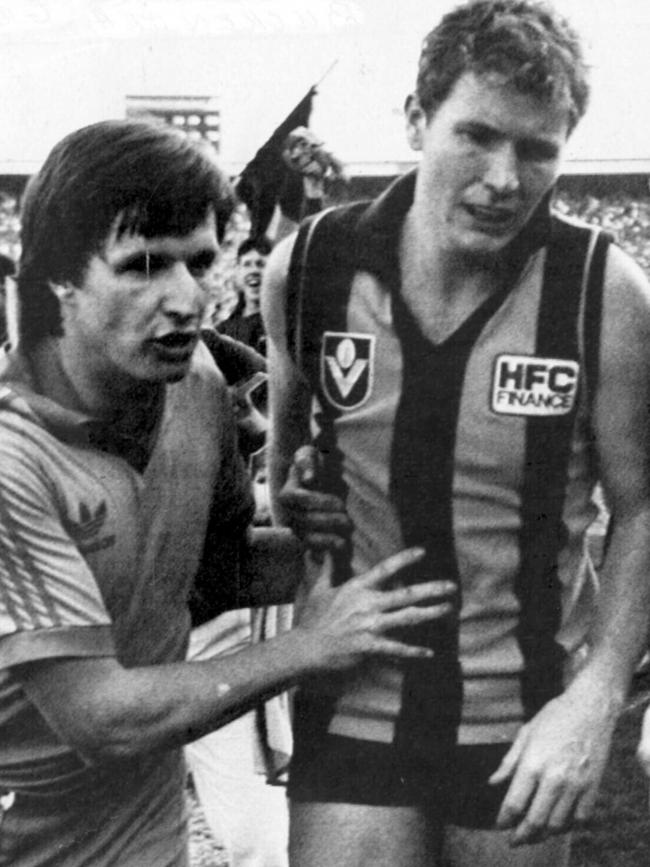
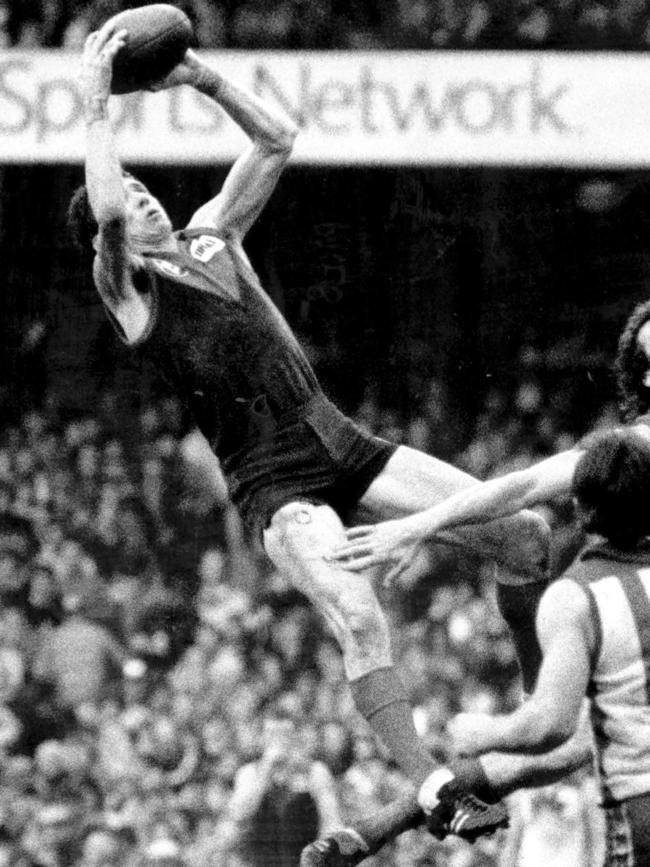
Barassi failed to drag the team into finals contention, but he’s credited with the rebuild that led to its late 1980s resurgence and the Irish experiment that brought Jim Stynes to Melbourne.
The John Northey coaching era began in 1986, the same year Garry Lyon debuted.
The Dees had a stunning year in 1987 but it ended in heartbreak when during the tight semi-final against Hawthorn, newbie Stynes ran across the mark in front of Gary Buckenara, conceding a 15-metre penalty that allowed Buckenara to kick the winning goal after the siren.
The Hawks broke Melbourne’s hearts again in 1988, defeating the Dees in the grand final, and the team played finals again in 1989.
THE AFL ERA
Melbourne started as one of the strongest sides at the beginning of the national competition; the club was in finals contention in 1991, with Stynes claiming the Brownlow Medal.
Allen Jakovich joined as a spearhead up forward, kicking 71 goals that same year.
Todd Viney, Adem Yze, Jeff Farmer, David Schwarz, David Neitz, Lyon and Stynes are among the best Demons of the ‘90s, but all that talent did not translate to major finals success.
Melbourne members narrowly supported a merger with Hawthorn, but Hawks fans rejected the union.
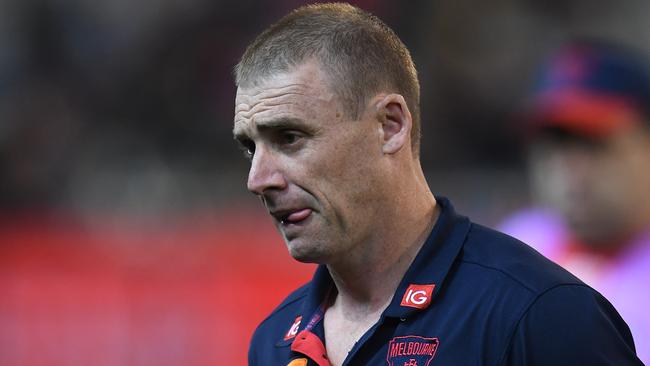
The team spent time in and out of the finals across the turn of the century under coaches Neil Balme and Neale Daniher, losing the grand final to Essendon in 2000.
In 2012, Melbourne was fined $500,000 over the 2009 tanking scandal, which saw football manager Chris Connolly banned from club activities for a year and then-coach Dean Bailey suspended for 16 weeks.
The club showed steady improvement under coach Paul Roos, and fans now hope Simon Goodwin can led Melbourne to premiership victory after a strong 2018.
MELBOURNE
VFL/AFL Premierships: 12 (the last in 1964), runners-up five times
VFL/AFL games played/won/lost/drawn: 2352 matches, 1057 won, 1274 lost, 21 drawn
Longest serving captain: David Neitz (175 games, 2000 to 2008)
Longest serving coach: Norm Smith (310 games, 1952 to 1967)
Longest serving player: David Neitz (306 games, 1995 to 2008)
Brownlow medallists: Ivor Warne-Smith (1926, 1928), Don Cordner (1946), Brian Wilson (1982), Peter Moore (1984), Jim Stynes (1991), Shane Woewodin (2000)


